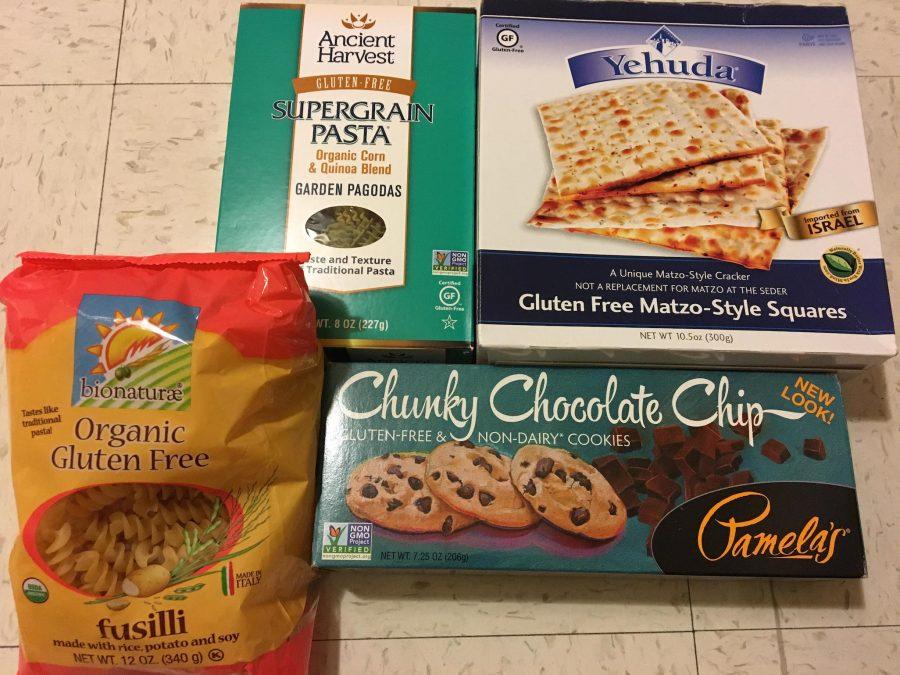Gluten free: diet for trend or necessity
Going gluten-free can be difficult at times, but there are alternatives out there.
November 28, 2016
Diets are so common that we often misinterpret someone turning down food because of a diet. We hear about these diet trends and have to ask what it is, how long they’re doing it for, and why they’re doing it. We worry that they’re doing this for the trend and that it might not actually be good for them. Often times, people aren’t actually on a diet, it may actually be a food allergy or intolerance.
I grew up in a household where my siblings and parents were food allergy free. My dad is an avid food lover and never really understood the want or need to limit what we eat. A few years ago I was diagnosed lactose intolerant and I thought that was hard to get used to, but more recently I’ve been diagnosed non-celiac gluten sensitive or gluten intolerant.
With non-celiac sensitivity, the symptoms may vary anywhere from: depression, abdominal pain, bloating, diarrhea, nausea, constipation, headaches, bone or joint pain, fatigue, and ‘foggy mind’.
According to the Food Allergy Research & Education, in the United States, 9 million or 4 percent of adults have food allergies, and 6 million or 8 percent of children have food allergies.
Those numbers may seem small compared to the amount of people in the world, but food allergies and intolerances actually affect a lot of us.
The most common food allergens out there are: milk, eggs, soy, wheat, peanuts, tree nuts, fish, and shellfish. These eight foods make up 90 percent of food allergy reactions according to the U.S. Food and Drug Administration.
Food allergies and intolerances were something that I was ignorant about growing up. I was able to eat anything and only really became aware of it when I was at a summer camp and during that session, there were members of G.I.G. there, which is Gluten Intolerance Group. This session at camp was specialized so that campers who can’t eat gluten, had food that they could eat and it was food that came from a gluten free kitchen.
Few people know what gluten is but it is a general word for the proteins found in wheat, rye, barley, and triticale (which is a cross between wheat and rye). Gluten acts as a way to hold food together and can be found in many types of food.
Gluten most commonly has been cut out of many people’s diets because they think it will help them lose weight just like people often times cut out dairy or meat for the same reason. So many doctors are advising against cutting it out because unless you are Celiac or intolerant, it actually isn’t good for you to remove it.
The common misconception is that it is all just a wheat allergy, but that’s wrong. There are variations of this.
Celiac disease is a genetic autoimmune disorder where the ingestion of gluten causes damage to the small intestine. According to Celiac Central, an estimated 1 in 133 Americans have celiac disease. A wheat allergy is an overreaction of the immune system to wheat that can trigger an allergic reaction that could include a range of symptoms (rashes, hives, itching, swelling, trouble breathing, wheezing, etc.). Non-Celiac gluten sensitivity or gluten intolerance is similar to celiac disease but without the intestinal damage seen in celiac disease.
Being lactose intolerant, there are ways around it as there are more non-dairy options for milk such as almond milk and soy milk. Companies have also created Lactaid, which is a pill that one can take in order to consume dairy and feel fine. Being gluten intolerant, on the other hand, has been somewhat harder as there are no pills that allow you to still consume gluten, you just have to avoid gluten altogether. There are gluten-free options, but they’re more expensive.
Going out to eat with friends and family now can be challenging. The options are limited and most times, I found restaurants menus lacked labeling for food allergens or they just didn’t have a gluten-free option or substitution.
Often times I found myself frustrated and not wanting to succumb to a plain salad with a dressing that I wasn’t too fond of but was still gluten free. As frustrating as this can be, it’s worth it. There is a sense of relief when I can eat and go about my normal day without feeling any pain, fatigue, nausea, etc.
With food allergies and intolerances, it seems like a burden, but you learn to read labels impeccably well. You become more aware of what you’re eating. People who remove gluten for the diet trend often are unaware of the nutrients gluten-free products lack, such as: iron, fiber, calcium, etc. Removing gluten from my diet wasn’t for a trend or to lose weight, it was necessary.




